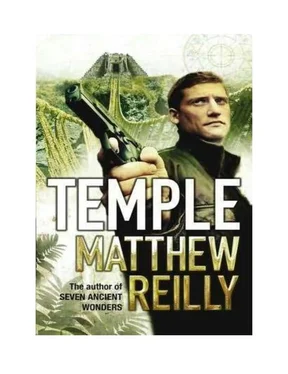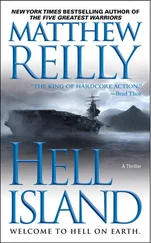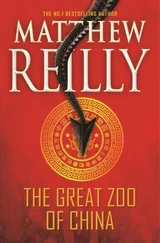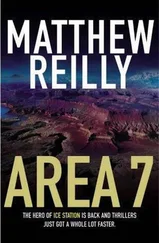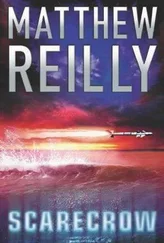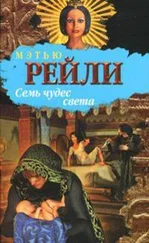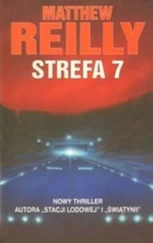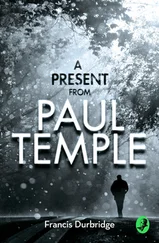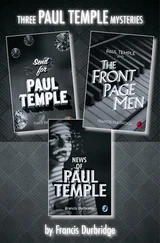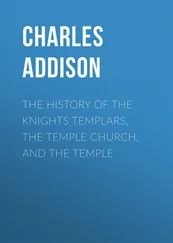Race had never expected to see her again. Nor, he thought, did I want to. But then, when Frank Nash had mentioned her name earlier that morning, something inside of him had clicked. He’d wanted to see what she had made of herself.
Well, he had seen that now and what he saw was clear— she’d made a hell of a lot more out of herself than he had.
Race blinked, snapped out of it.
He came back to the present and found that he was staring at her wedding ring.
Jesus, get a grip, he thought to himself.
‘Frank said you did a good job with the manuscript,’
Lauren said.
Race coughed, clearing his throat as well as his mind. ‘As much as I could do. I mean, hey, it isn’t theoretical physics, but, it’s.., well, it’s what I do.’
‘You should be proud of what you do,’ she said. And then she smiled at him. ‘It’s good to see you again, Will.’
Race smiled back as best he could.
Then she stood and looked about herself. ‘Well, anyway, I’d better be getting back. Looks like we’re about to land.’
It was late in the afternoon when the Hercules landed heavily on a dusty private airstrip at the edge of the Cuzco valley.
The team disembarked the plane on board the troop truck that had made the journey to South America in the big plane’s belly. The massive truck rumbled out of the rear loading ramp and immediately headed north along a badly-paved road toward the Urubamba River.
It was a bouncy ride. Race sat in the back of the truck next to his bodyguard, Sergeant Van Lewen.
The other members of the team—the three DARPA people, Nash, Lauren and the hawk-faced physicist, Copeland; Chambers, the anthropologist; and Gaby Lopez, a striking young Latin-American woman who was the team’s archaeologist-all sat with their own Green Beret bodyguards.
At one point in the trip, the truck drove along a rise and Race was able to see down the length of the Cuzco valley.
On the left-hand side of the valley, situated on a grassy green hill, lay the ruins of Sacsayhuaman, the mighty fortress he had so recently read about. Its three gargantuan tiers were still discernible, but time and weather had robbed them of their majesty. What four hundred years ago had been a magnificent and imposing fortress fit for the eyes of kings was now a crumbling ruin fit only for the eyes of tourists.
To the right, Race saw a sea of terracotta roofs—the modern-day city of Cuzco, its surrounding wall having long since been removed.
Beyond the rooftops lay the barren southern mountains of Peru—brown and harsh, as desolate as the snowcapped peaks of the Andes to the north were spectacular.
Ten minutes later, the truck arrived at the Urubarnba River, where it was met by a thirtysomething man dressed in a white linen suit and a cream Panama hat. His name was Nathan Sebastian and he was a lieutenant in the United States Army.
Behind Sebastian, floating lazily in the river alongside a long Tshaped jetty, were two military helicopters.
They were Bell Textron UH-1Ns—‘Hueys’. But these two Hueys had been modified slightly. Their long thin landing struts had been removed and replaced with longer pod-like pontoons that floated on the surface of the river. One of the choppers, Race saw, had a complex-looking array of electronic devices suspended beneath its frog-like nose.
The troop truck skidded to a halt near the jetty and Race and the others piled out of it.
Lieutenant Sebastian walked straight up to Nash. ‘Choppers are all set, Colonel, just as you requested.’
‘Well done, Lieutenant,’ Nash said. ‘What about our competitors?’
‘A SAT-SN scan was conducted ten minutes ago, sir.
Romano and his team are currently flying over Colombia, en route to Cuzco.’
‘Jesus, they’re already over Colombia,’ Nash said, biting his lip.
‘They’re gaining on us.’
‘Their estimated time of arrival in Cuzco is three hours, sir,’ Sebastian said.
Nash looked at his watch. It was 5:00 pm exactly.
‘Then we don’t have much time,’ he said. ‘Let’s get these choppers loaded and into the air.’
Even as Nash said it, the Green Berets were already loading six large Samsonite trunks onto the two Hueys. Once they were stowed, the twelve team members split up into two teams of six and climbed aboard.
The two choppers took off from the river, leaving Nathan Sebastian standing on the jetty, holding onto his stupid hat.
The two Hueys soared over the snowcapped mountain peaks.
Race sat in the back of the second chopper, staring in awe at the spectacular mountain gorges that raced by beneath them.
‘All right, everyone,’ Nash’s voice said over their headsets.
“I figure we’ve got about two hours of daylight left. And I’d like to do as much of this as I can in the light. The first thing we have to do is find that first totem. Walter? Gaby?’
Nash had Chambers and Gaby Lopez with him in the lead chopper.
The two Hueys were heading out over the mountains, past the Paucartambo River, in the general direction of the three river villages mentioned in the Santiago Manuscript: Paxu, Tupra and Roya.
According to the manuscript, they would find the first totem near the last-mentioned town, Roya. Now it was up to Chambers and Lopez, the anthropologist and the archaeologist, to deduce the exact modern-day location of that riverside town.
And so, Race mused, what had taken Renco Capac and Alberto Santiago eleven days to accomplish, they did in fifty minutes. After soaring over the jagged pointed peaks of the Andes for almost an hour, suddenly—gloriously—the mountains slid away beneath them and Race saw a spectacular expanse of flat green foliage stretching away from him for as far as he could see. It was an amazing sight. The beginning of the vast Amazon River Basin.
They flew northeast, low over the rainforest the rotor blades of the two helicopters thumping loudly in the silent afternoon air.
They flew over some rivers, long fat brown lines that snaked their way through the impenetrable forest. At times, they would see the remains of old villages on the river banks, some of them with stone ruins in the centre of their town squares, others just overgrown with weeds.
At one point in their journey, Race saw the faint yellow glow of electric lights peeking up over the darkening horizon.
‘The Madre de Dios goldmine,’ Lauren said, leaning over him to look at the glow herself. ‘One of the largest open-cut mines in the world, also one of the most remote. It’s the closest thing we’ll get to civilisation around here. Just a great big earthen cone sunk into the earth. I’d heard it was abandoned sometime last year. Guess it’s been re-op—’
At that moment, there came a flurry of excited voices over the radio.
Chambers and Lopez were speaking animatedly, saying something about the village immediately beneath the two Hueys.
The next voice Race heard belonged to Frank Nash. He was ordering the choppers to land.
The two Hueys landed in a deserted clearing by a riverbank, flattening the long grass with their downdrafts. Nash, Chambers and Lopez all stepped out of their chopper.
Several moss-covered stone monuments stood in the middle of the grassy clearing. After a few minutes of examining the monuments and comparing them to their notebooks, Chambers and Lopez agreed that this was almost certainly the site of the village of Roya.
After the identity of the village was confirmed, Race and the rest of the team disembarked their choppers and a search of the surrounding jungle ensued. Ten minutes later, Lauren found the first stone totem about five hundred metres to the northeast of the town.
Race stared at the giant stone totem in awe.
It was infinitely more frightening in real life than he had imagined it to be.
Читать дальше
